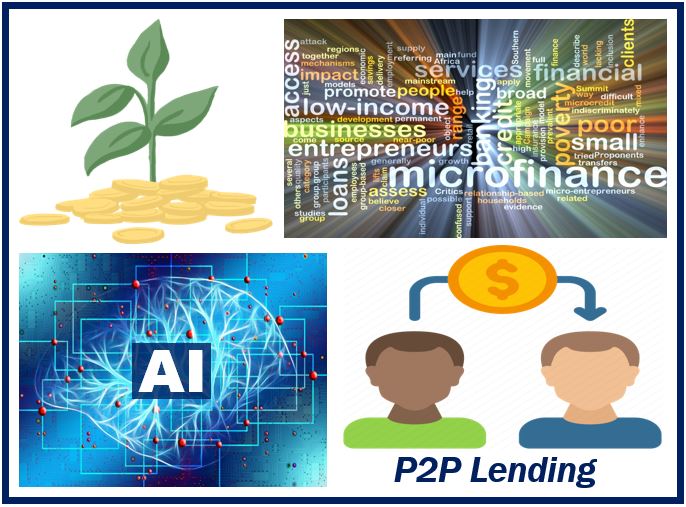Although microfinance is not the first industry we think about when mentioning Artificial Intelligence it needs to be known just how much this innovative technology managed to revamp this sector completely.

Unfortunately, the microfinance sector is too large to cover completely, and in some cases, AI is note required whatsoever because most of it is already automated through “traditional” technological advancements.
The one place where AI has managed to gain a foothold with microfinance is the P2P lending sector. This is a relatively new method, however, which has been digitalized for only a couple of years.
In the past, most microfinance organizations would simply act as an alternative to banks but would require much fewer qualifications from the borrower to hand out loans. This was mostly due to having a lot fewer responsibilities than banks, thus allowing these microfinance organizations to risk a bit more.
There were only a couple of companies in the world that had enough security to offer both volume and lower interest rates. This was mostly happening in Australia though, where not only the law but the availability and demand on loans was increasing rapidly. It quickly became apparent that specifically targeted markets were the go-to for lending companies, thus opening the door for new campaigns.
However, these campaigns were not really as effective as anticipated due to a new strategy in the market. This strategy was lender-finding, which is pretty much what we will discuss in this article. Since we’re on the topic of Australia, we can see this new strategy materialize by looking at Monzi Loans specifically. What we see is a company offering borrowers just a small hassle of registration while the rest of the heavy lifting is done by the service provider itself.
It finds a lender that is willing to work with a specific borrower. In this case, it’s man-powered but could rapidly change thanks to automation as we will find out further into the article.
How P2P lending works
The most surprising fact about P2P platforms is that they are not lenders themselves, they are just a website or some kind of directory that is used by individual lenders and borrowers.
For example, imagine there is a website where you can register as a lender. You can indicate how much you are ready to lend out, who you’d like to lend out to and how much interest rate you’d like to charge.
This would then register on the website where the borrowers would search for. However, this was not enough for most people. For some lenders, it was not really desirable to be similar to an auction or a choice from a list. They wanted to directly match with a borrower, or even look for them themselves.
This is where AI steps in.
AI in P2P lending
There are not too many websites that have adopted this but the process is already underway. What happens on these platforms is that both the borrower and the lender indicate their requirements when registering and transfer this information to the website’s database.
The website then initiates its AI protocol trying to find ideal matches between both the lender and the borrower. The good thing about this is that it is almost instant. The lender does not have to wait for somebody to find them and send in a request, and the borrower doesn’t have to spend hours looking for the perfect offer.
Once the match has been made, some lending platforms initiate what’s called a smart contract if they are using digital currencies for the deal. If not, then both the lender and the borrower receive an information that confirmation is available.
After the confirmation, the P2P lending platform acts as an intermediary between the two parties and steps in for things like conflict resolution should there be anything.
This is a massive step up simply because the lenders get guarantees for money-back if the borrower defaults, while the borrowers get access to instant loans they can customize interest rates for through negotiation if necessary.
Video – Artificial Intelligence
Interesting related article: “What is Artificial Intelligence?”

